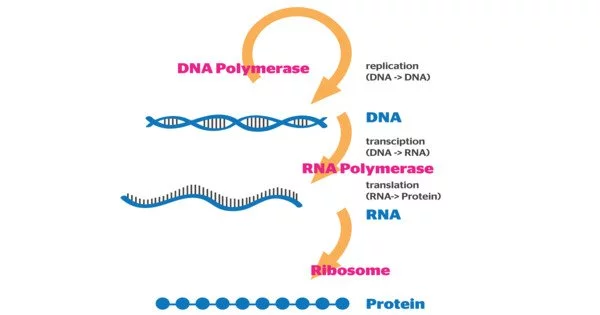Gene expression is the process by which the information contained in a gene is used to produce a functional gene product, often a protein. It is the process by which information from a gene is employed in the synthesis of a functional gene product, allowing it to make end products, proteins, or non-coding RNA, and so alter a phenotype. This process is crucial to how live organisms develop, grow, and operate and is a vital component of molecular biology and genetics.
Gene expression is carefully regulated and takes numerous stages to guarantee that genes are turned on (expressed) or off (repressed) at the appropriate times and in the appropriate tissues. These products are frequently proteins, but the product of non-protein-coding genes such as transfer RNA (tRNA) and small nuclear RNA (snRNA) is a functional non-coding RNA.
The basic steps of gene expression include:
- Transcription: The information in a DNA gene is used to make a complementary RNA molecule known as messenger RNA (mRNA) in this phase. This process is carried out by the enzyme RNA polymerase in the nucleus of eukaryotic cells and the nucleoid area of prokaryotic cells.
- RNA Processing: The freshly synthesized pre-mRNA is modified in several ways, including capping (the addition of a 5′ cap), splicing (the removal of introns and the joining of exons), and polyadenylation (the addition of a poly-A tail). These alterations are required for the mRNA’s stability, transport, and translation.
- Translation: Translation takes place in the cytoplasm and involves the conversion of mRNA into a protein. During this process, the information carried by the mRNA is used to assemble a chain of amino acids in a specific order. This is achieved by ribosomes, tRNA (transfer RNA), and aminoacyl-tRNA synthetases.
- Post-Translation Modifications: To become a functional protein, the protein may undergo numerous post-translational changes such as folding, phosphorylation, glycosylation, and others after translation.
Gene expression is the most fundamental level at which the genotype gives rise to the phenotype, or observable trait, in genetics. The genotype is represented by the genetic information encoded in DNA, whereas the phenotype is the consequence of the “interpretation” of that information. Such phenotypes are frequently manifested by the creation of proteins that affect the structure and development of the organism or function as enzymes catalyzing certain metabolic processes.
Gene expression is highly regulated and can be manipulated at several levels. Regulation can take place at the transcriptional level, where transcription factors and regulatory regions in DNA control transcription initiation. It can also be regulated at the post-transcriptional level, which controls processes such as mRNA stability, splicing, and translation. Furthermore, epigenetic changes such as DNA methylation and histone alterations might affect gene expression patterns.
















